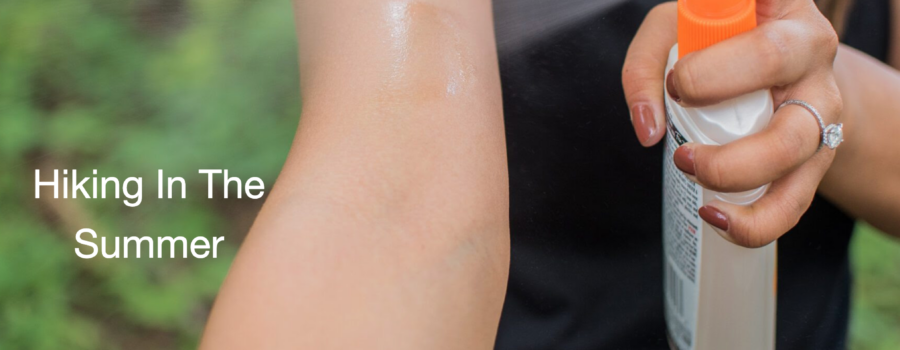Hiking the Bruce Trail in the summer can be a glorious experience but it also comes with its own set of challenges. When heading out to the trails, consider the following.
Sunburns
Can occur rapidly and can be quite severe; it is surprising how quickly a sunburn can occur in the spring when no leaves are on the trees. Be sure to apply sunscreen before you hit the trails and bring it with you to reapply during your visit. Wear a hat and sunglasses to protect your face and eyes and consider wearing UV protective clothing.
Heat
Southern Ontario can get very hot in the dead of summer. Be prepared when hiking in the summer by taking the heat into consideration.
- Avoid hiking during extreme heat warnings.
- Hike early in the morning or in the evenings when the temperatures are lower.
- Drink plenty of fluids such as water or sports drinks with electrolytes.
- Listen to your body and take breaks when needed.
- Stick to shaded areas of the trail.
Be aware of the signs of heat cramps, heat exhaustion, and heat stroke, listen to your body, and hike accordingly.
Thunderstorms & Lightning
Summer storms can roll in quickly. Always check the weather forecast before hitting the trails and take the following precautions when an unexpected storm occurs:
- Avoid open spaces, hills, and high places or steep slopes.
- If you are in the forest stay there, but keep away from the edge of the forest, clearings, or isolated trees.
- Do not lie down on the ground. Squat low to the ground with your feet together and keep your arms near your body. Tuck your head between your knees and avoid contacting the ground with any other part of your body. This will reduce your risk of being struck by lightning.
Review the Government of Canada’s Lightning Safety Overview for more information.

Black Bears
Black bears are active in the northern section of the Bruce Trail, on the Saugeen (Bruce) Peninsula, from early spring until late fall. Bears tend to avoid humans and Black Bear attacks on humans are very rare.
To avoid a Black Bear encounter:
- Make noise as you move through wooded areas; Talk, clap or sing to avoid surprising a bear
- Travel with others if possible
- Carry and have readily accessible a whistle or an air horn, and bear pepper spray. Know how to use this spray.
- Avoid strong fragrances that may cause a bear to be curious; put any food you are carrying in sealed containers in your pack.
- Keep your dog on a leash
If you encounter a bear:
- Remain calm and do not run or climb a tree
- Do not try to get closer to the bear for a better look or picture.
- If the bear is not paying any attention to you, slowly and quietly back away while watching the bear to make sure it isn’t following you.
- If the bear obviously knows you are there, raise your arms to let the bear know you are a human. Make yourself look as big as possible. Speak in a firm but non-threatening voice while looking at the bear and backing away.
- If the bear continues to approach, stand your ground and be aggressive – use your whistle or air horn, yell, stand tall, wave your arms and throw objects. Fight back if you have to.





















